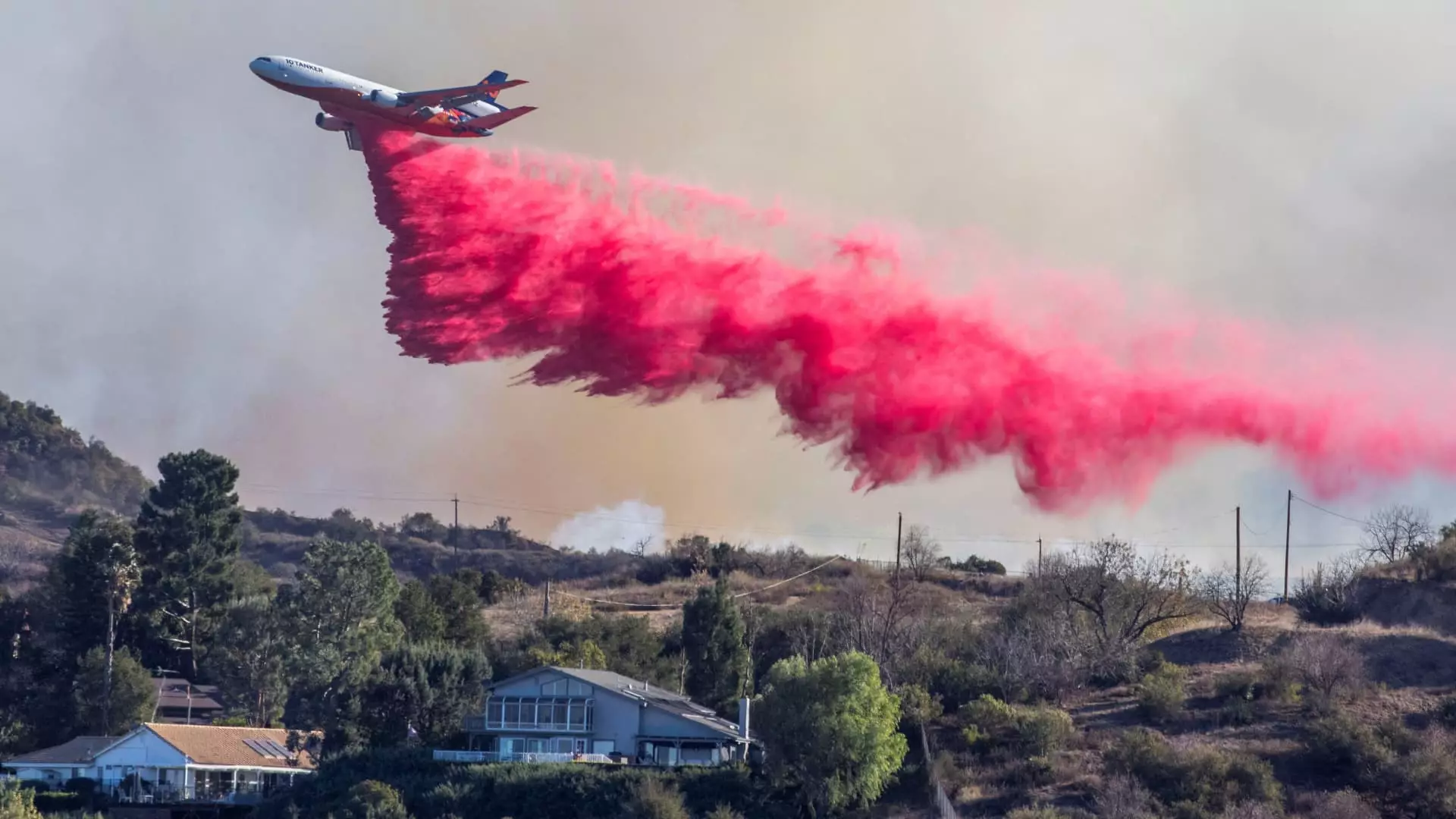As the ferocity of wildfires continues to grow, the urgency for effective aerial firefighting strategies becomes more apparent. Recent months have seen California grappling with some of its worst fire seasons in history. This escalation not only places immediate pressure on local authorities but also raises significant questions about the adequacy and responsiveness of aerial firefighting resources. For instance, during a particularly devastating event in Los Angeles, private operators found themselves scrambling to support overwhelmed firefighting efforts, underlining the necessity for rapid mobilization of aerial assets, even during the off-season.
The pivotal role played by private firefighting companies has increasingly come to light. Although government agencies like Cal Fire operate extensive fleets of firefighting aircraft—including more than 60 helicopters and fixed-wing planes—private firms are often called in to supplement these resources when fires threaten populated areas. Companies such as 10 Tanker Air Carrier and Bridger Aerospace have been instrumental in aerial firefighting through their tailored fleets of converted aircraft. These firms bear the burden of aerial response during crises and showcase the business aspect of disaster management. With contracts from the U.S. Forest Service worth billions, these private entities have become essential partners in managing the wildfire crisis.
A significant obstacle to effectively slowing the spread of wildfires is the increasing demand for aerial firefighting resources. Research from the United Nations Environment Program anticipates not only an uptick in wildfire frequency but also an enhancement in their severity due to the ongoing impacts of climate change. This alarming trend is reflected in data from the U.S. Environmental Protection Agency, which shows a substantial rise in areas destroyed by wildfires over the last twenty years. The implications are clear: more resources will be needed to address wildfires that are increasingly becoming a year-round threat rather than a seasonal hazard.
Logistical Challenges and Impediments
Despite the advanced capabilities of aerial firefighting method, logistical hurdles complicate rapid deployments. Seasonal maintenance for aircraft often leads to delays in availability. As highlighted by Sam Davis, CEO of Bridger Aerospace, aircraft can be grounded during their scheduled off-season maintenance, limiting immediate firefighting capabilities. Companies are also confronted with the slow pace of aircraft conversion, which can take up to 18 months—a significant bottleneck when the need is urgent. Implementing swift and effective changes within these companies is critical to maintaining operational readiness.
Aerial firefighting has evolved rapidly, increasingly integrating advanced techniques and processed firefighting equipment. The use of specialized aircraft such as converted DC-10s or Canada’s De Havilland water scoopers reflects the changing landscape of wildfire responses. These aircraft are engineered to meet the unique challenges posed by the unpredictable and often perilous nature of wildfires. However, the method of dropping fire retardant or water is far from simple. Pilots must navigate challenging conditions, often including turbulent winds and rugged terrain, making the need for highly skilled pilots paramount.
As the frequency of wildfires escalates, the future of aerial firefighting inevitably hinges on adaptability and innovation. Current players in this field will need to expand their fleets while also investing in newer technologies and methodologies. Orders for next-generation aircraft are already being placed, with manufacturers like De Havilland announcing plans for a new model aimed at improving efficiency. This foresight illustrates that the industry recognizes the mounting demand and is gearing up to meet it head-on.
The interconnectedness between climate change and increased wildfire activity illustrates a crucial need for comprehensive emergency response strategies that adapt to an evolving landscape. As evidenced by the ongoing struggles of both private companies and public agencies, the fight against wildfires is far from straightforward. Integrating collaborative efforts, technological advancements, and innovative planning will be vital for successful management of future wildfire threats. Investing in these areas not only prepares for unforeseen fire seasons but also represents an acknowledgment of the changes that our environment is facing in the 21st century.
The call to action is clear: as wildfires increasingly wreak havoc across vast landscapes, enhancing aerial firefighting capabilities is paramount. The future of aerial firefighting will require an amalgamation of private innovation, government support, and progressive policies to create a robust and responsive system. Looking ahead, it is imperative to develop strategic frameworks that ensure readiness at all times, recognizing that the off-season for wildfires may soon become a relic of the past.

